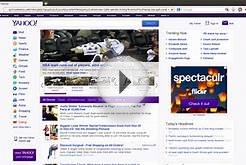One of the biggest red flags I see in many Internet-related business plans today is advertising as the initial revenue stream, or a key part of it. If challenged, the founder usually cites the Facebook business model (free service to users, revenue from ads), but forgets that Facebook has had several hundred million in funding, and has been profitable only in the last couple of years.
The most challenging time is your first years, when your site is unknown, and your page-views are low. Until you get a million page-views per month, your revenue will be negligible, and advertisers won’t be interested in your site. Don’t count on that to fund your startup.
This is a tough business. It can be very successful like it now is for Facebook, but entrepreneurs usually underestimate how long it will take for page-views to ramp. They might see early traction due to early promotions, or special advertiser deals, but then reality sets in.
To better understand these realities, let’s clarify some terminology. Unless you live in this world every day, you are probably as confused as I was by the different advertising models, so let me outline the common ones:
- Pay per click (PPC). In this most popular model, advertisers pay each time a user clicks on an ad and is redirected to the advertiser website. Advertisers do not pay for each ad view, but only when the ad is clicked on. For advertisers, this is called cost per click (CPC).
- Pay per view (PPV, PPI or PPM). With this model, you get paid for each ad view or page-view (same as impression). For advertisers, this is cost per impression (CPI), or cost per mille (CPM) per thousand impressions. Advertisers normally prefer CPC, since they don’t like to pay when you ignore their ad.
- Pay per action (PPA or PPL). This advertising model was added a few years ago to mitigate the risks of click fraud. Here the advertiser pays only if a customer has been delivered to a website and takes a further action (conversion), such as buying a product or filling out a web form. The advertiser side is called cost per action (CPA) or cost per lead (CPL).
Now back to the revenue realities. If a startup wants to get the attention of investors, it needs to show large growth, like $50 million in revenue in five years. Today, without highly specialized targeting, the rule-of-thumb expectation should be no more than $1 in advertising revenue per thousand page-views.
To get to $50 million in revenue you would need 50 billion page views in a year, or just over 4 billion per month. Facebook is far above this range now, now with over 1 trillion page views, but only the top 10 sites in the US are in the right ballpark, and all took several years to get there, and none of these have been startups for quite some time.
It doesn’t matter that the ads themselves come in a myriad of shapes and sizes – banner, panel, floating, expanding, wallpaper, trick banner, pop-up, pop-under, or even video. Costs and payments vary by size, level of targeting, and volume. A current trend to increase revenue is to make advertisements more interactive, but the basic numbers haven’t changed much.
The bottom line is that any online advertising revenue you project in the first couple of years for your startup will be heavily discounted by any savvy investor, and will likely cause your business plan to be rejected. Face reality.
Investors know that during this early period, you will likely be spending more heavily than you expect, to build page-views, rather than collecting revenue from the millions of users you won’t have yet.












